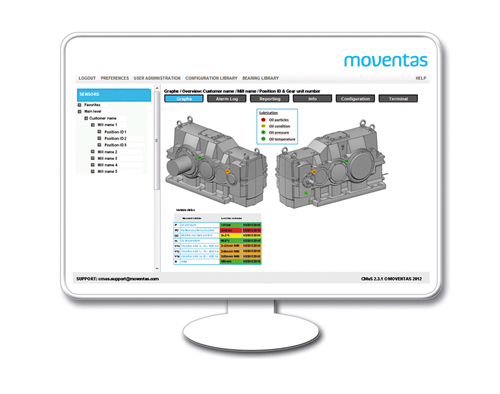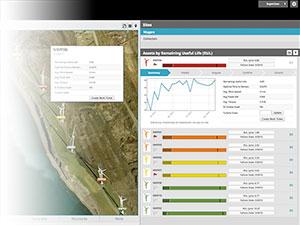Giving Them the Gears: Predicting the life of gearboxes
 “Built to last” is no doubt the intent of the majority of gearbox manufacturers when it comes to wind turbines. There’s honor in integrity and reliability, after all, but more than that there’s money to be gained and to be lost. When it comes to gearboxes over the last decade or two, reliability has been in question. Gearboxes made for wind turbines simply haven’t been measuring up to many of their promises for longevity. Too many aren’t meeting their 20-year design lifetime.
“Built to last” is no doubt the intent of the majority of gearbox manufacturers when it comes to wind turbines. There’s honor in integrity and reliability, after all, but more than that there’s money to be gained and to be lost. When it comes to gearboxes over the last decade or two, reliability has been in question. Gearboxes made for wind turbines simply haven’t been measuring up to many of their promises for longevity. Too many aren’t meeting their 20-year design lifetime.
Most turbines require repairs or even complete overhauls around the five- to seven-year range, and gearboxes tend to be a popular contributing factor.
Along with the maintenance requirements, unexpected and premature failure of gearboxes cost money, affecting a wind farm’s bottom line.
Turbine downtime seriously impacts an owner’s return on investment (ROI) and resources. The price of repairs and replacements aside, there’s also the expense of maintenance crews, travel, fall protection, and cranes—most turbines are found in remote locations, many reaching heights of around 300 meters, and the installed gearboxes are certainly not light in weight. Downtime also increases the total cost of energy.
The GRC
Well aware of the consequences of premature gearbox failures, the National Renewable Energy Lab (NREL | www.nrel.gov) initiated the Gearbox Reliability Collaborative (GRC) back in 2007. The project—likely the most comprehensive of its kind—has combined analysis, field testing, dynamometer testing, condition monitoring, as well as the development and population of a gearbox failure database in a multi-pronged approach to determine why many wind turbine gearboxes weren’t achieving their expected design life. The result has been a collection of an extraordinary amount of experimental testing data. Seems gearbox deficiencies are the result of many factors.
They have, for example, highlighted the importance of non-torque loads (NTL), such as shaft thrust and bending, which had historically been left out of the modeling and dynamometer test validation process. (“GRC results indicate that NTL affects tooth contact patterns in the low-speed stage, resulting in increased gear tooth edge loading and unequal load sharing among planet gears that can shorten gearbox life;” read more at www.nrel.gov/wind/grc/research.html).
The research has also demonstrated that increased loading on bearings can be a contributing factor to a shorter bearing life than expected, thereby affecting the gearbox. Perhaps worth noting, there are recently revised standards for wind turbine gearbox designs, ISO 61400-4, which require sizing gearbox bearings per ISO 281 and ISO 76.
In fact, the GRC has identified shortcomings in the design, testing, and operation of wind turbines that contribute to excessive loads and deflections within the gearbox and, by extension, many have contributed to unintended gearbox failures.
Of course, all of this data and information has been highly instrumental to the manufacturers and engineers of today’s gearboxes. The data, perhaps, also leads us toward a path of prediction—of recognizing the value in preventing breakdowns or failures before they happen.
Knowing the future
 There is an inherent value in awareness; in being able to judge, for instance, that one component of a gearbox (such as the bearing) is slowly degrading, or only running sub-par. Rather than running turbines until they break, this allows an operator to schedule required maintenance (instead of simply guessing or not knowing at all).
There is an inherent value in awareness; in being able to judge, for instance, that one component of a gearbox (such as the bearing) is slowly degrading, or only running sub-par. Rather than running turbines until they break, this allows an operator to schedule required maintenance (instead of simply guessing or not knowing at all).
The creation of monitoring software has also paved the way for improvements in gearboxes, at least in terms of forecasting potential replacement or repair needs, even down to the exact component level in some cases.
One case study demonstrates the value of a condition management system, which, in this particular case, detected irregularities and issues with rising trend of particles at a wind farm. Endoscope procedures were performed on all turbines at the site, which showed where material had peeled off from the outer race and rollers in the second planetary stage on four out of the 10 turbines. Using two replacement gears, all four turbines were repaired without any guessing or unjustified maintenance.
Plus, two of the gearboxes underwent an intense, 12-day workshop service, including dismantling, assembly of new internals, as well as replacement bearings. All parts and service procedures were pre-planned—thanks to the quick detection of the condition management system—minimizing damage and ensuring a quick turnaround of the refurbishment project.
Beyond the future, another new proprietary software is also available that essentially simulates real-world operating conditions for wind turbines to discover how they will react. The self-run program not only allows manufacturers or engineers to “virtually” test the implications of various components to determine “what ifs” and “best case scenarios,” but the system also provides an accurate prediction of the performance of specific wind turbines—to the level of their micro-structure.
Such technology could completely change how components are selected for turbines. Moreover, the system can predict a potential future failure, demonstrate what it will look like, and offer the best steps to take that can help a wind farm operator extend its remaining life and operation.
With the average cost of fixing a wind turbine somewhere between $300,000 and $700,000 per failure, an ability to predict future failures becomes of significant value. Monitoring or predictive software can lead to a substantial ROI for wind farm operators by reducing downtime—and perhaps just as importantly, potentially forecast the best components for a particular turbine or wind farm.
Turbine downtime and related gearbox deficiencies may be the result of many factors, but with research programs, such as the Gearbox Reliability Collaborative, and with ongoing new technologies, such as condition monitoring software, future turbine components seem bound for true longevity. Twenty years of gearbox life might not be so unreasonable, after all.
Moventas
www.moventas.com
Sentient Science
www.sentientscience.com
Author: Amber Lawson
Volume: March/April 2014










.jpg?r=1266)

